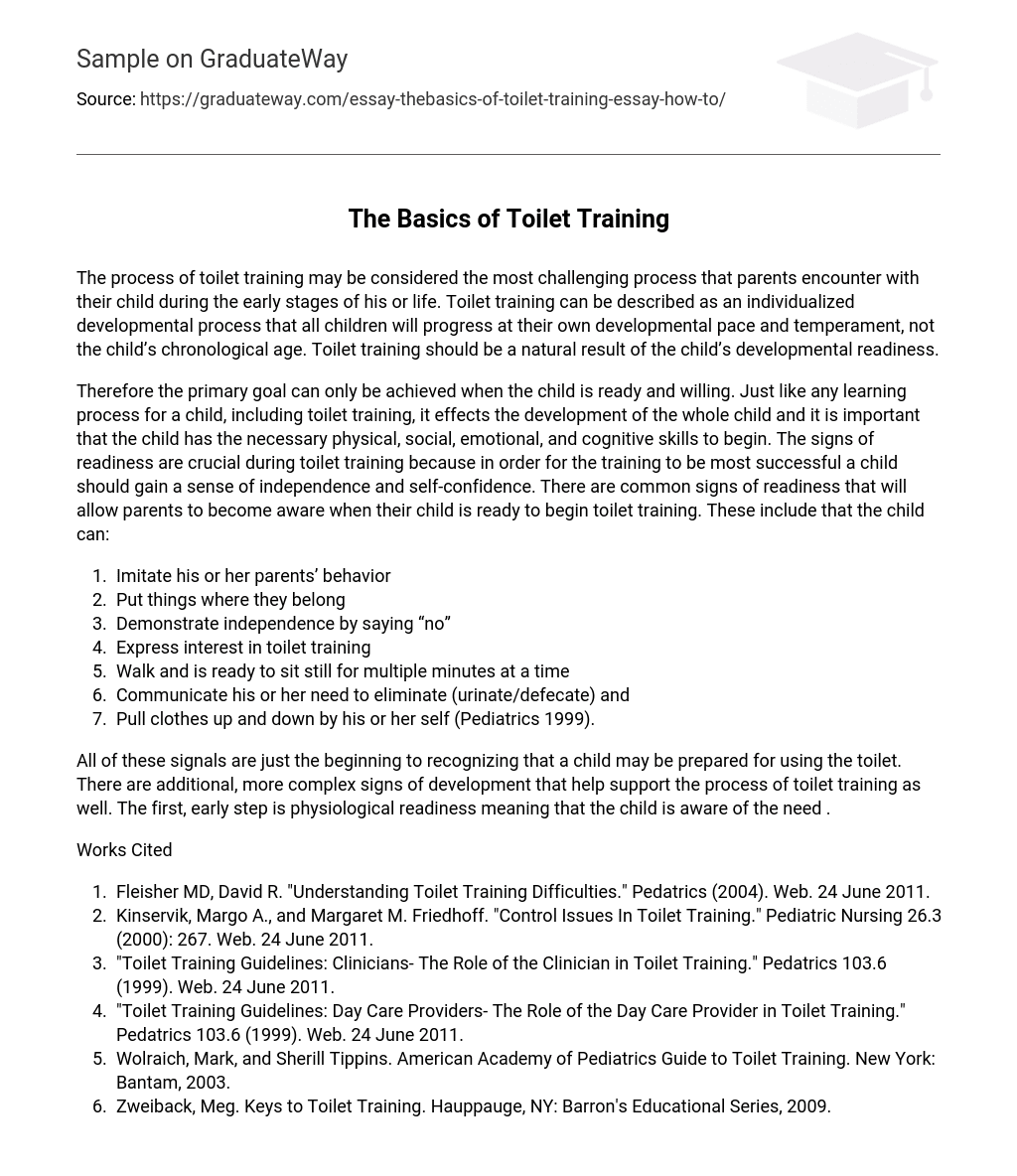Toilet training is commonly perceived as the most challenging endeavor for parents during their child’s early years. It is an individualized developmental journey that each child undergoes at their own pace and in alignment with their temperament, rather than solely based on age. Toilet training should take place when the child shows natural readiness.
To achieve the primary goal, the child must be prepared and eager. Toilet training impacts a child’s overall development, just like any other learning process. Before starting training, it is crucial for the child to have the necessary physical, social, emotional, and cognitive abilities. Identifying signs of readiness during toilet training is essential as it helps the child develop independence and self-confidence needed for success. Parents can look for common signs indicating their child is ready to start toilet training. These signs include the child’s ability to:
- Imitate his or her parents’ behavior
- Put things where they belong
- Demonstrate independence by saying “no”
- Express interest in toilet training
- Walk and is ready to sit still for multiple minutes at a time
- Communicate his or her need to eliminate (urinate/defecate) and
- Pull clothes up and down by his or her self (Pediatrics 1999).
The aforementioned signals are just the initial indicators that a child may be ready to start using the toilet. There are further, more intricate signs of development that assist in facilitating the toilet training process. The first early step involves physiological readiness, which entails the child being conscious of their bathroom needs.
Works Cited
- Fleisher MD, David R. “Understanding Toilet Training Difficulties.” Pedatrics (2004). Web. 24 June 2011.
- Kinservik, Margo A., and Margaret M. Friedhoff. “Control Issues In Toilet Training.” Pediatric Nursing 26.3 (2000): 267. Web. 24 June 2011.
- “Toilet Training Guidelines: Clinicians- The Role of the Clinician in Toilet Training.” Pedatrics 103.6 (1999). Web. 24 June 2011.
- “Toilet Training Guidelines: Day Care Providers- The Role of the Day Care Provider in Toilet Training.” Pedatrics 103.6 (1999). Web. 24 June 2011.
- Wolraich, Mark, and Sherill Tippins. American Academy of Pediatrics Guide to Toilet Training. New York: Bantam, 2003.
- Zweiback, Meg. Keys to Toilet Training. Hauppauge, NY: Barron’s Educational Series, 2009.





